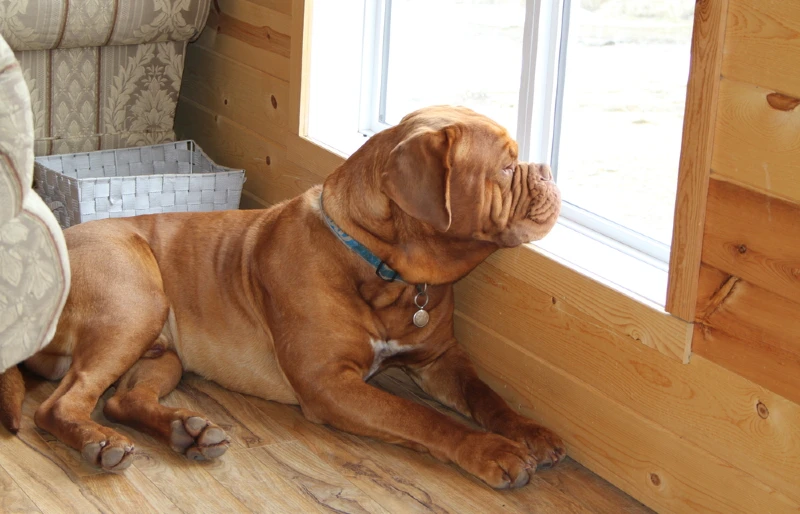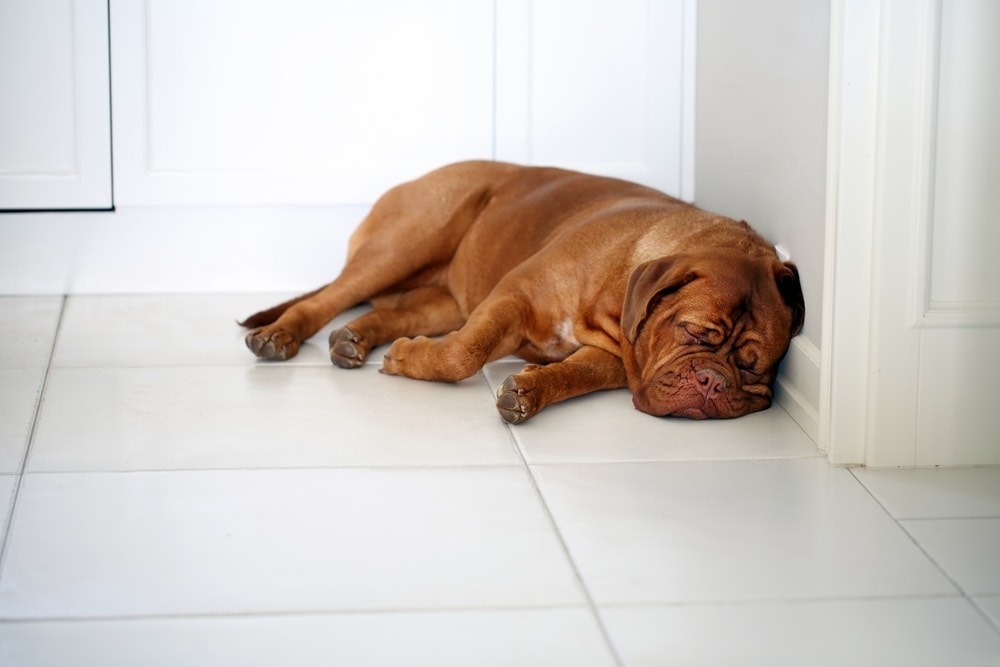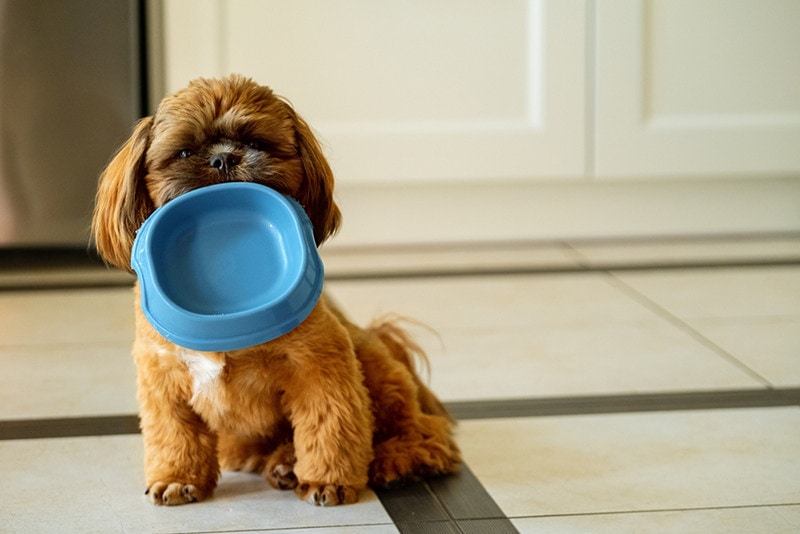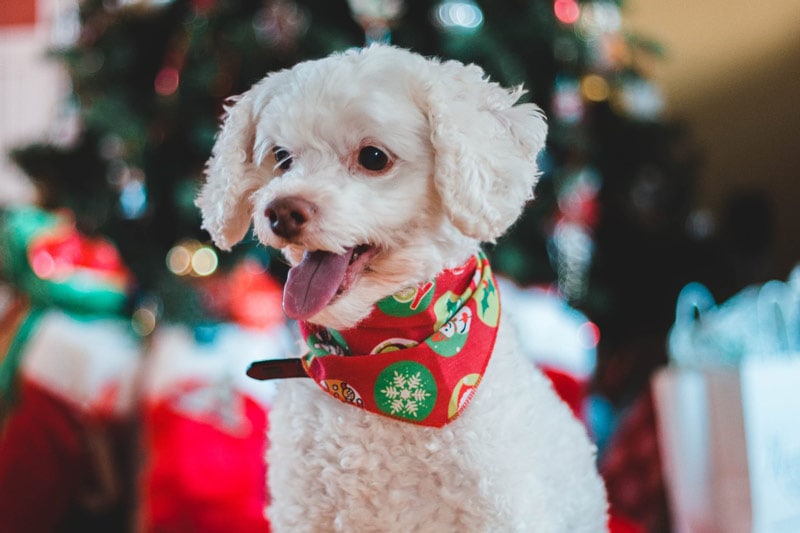Can Mastiffs Be Left Alone? Facts & FAQ
By Kit Copson
Updated on

Though Mastiffs may appear intimidating with their considerable size and solemn facial expressions, they’re actually just great big softies that adore their families and never say no to a cuddle. These are wonderful traits, but the Mastiff’s level of devotion can lead to issues like separation anxiety if they don’t form positive associations with alone time.
Healthy adult Mastiffs can certainly be left alone during the day, as long as it’s not for an excessive period of time. That said, it’s essential to introduce your Mastiff to alone time gradually and set them up for a relaxing day in your absence. Read on to find out more about leaving your Mastiff alone.
How Long Can I Leave My Mastiff Alone?
If your Mastiff is a healthy adult accustomed to alone time, they can spend around 6 hours alone, with 8 hours as the maximum. This is for two reasons, the first being that dogs need social interaction and will feel lonely or even stressed if left alone for too long. The second reason is that dogs can only hold their bladder for so long before disaster strikes!
As a general rule, healthy adult dogs can go for around 6 hours without peeing, so, if you plan to be out of the house for longer, you should consider asking someone you trust to come and spend some time with your Mastiff, and let them out to go to the bathroom.
Senior Mastiffs may not be able to hold their bladder for as long, so the amount of time they can be alone might be less than a healthy adult. Senior dogs may also suffer from medical conditions that require someone to check in with them regularly, so your Mastiff’s age and health condition are two important factors to consider.

How Long Can Mastiff Puppies Be Left Alone?
Puppies—especially very young ones—need to get used to spending time alone so it doesn’t come as such a shock to them. You can make this happen by gradually increasing the amount of time they spend alone as they age. Moreover, puppies need to pee an awful lot more than adult dogs, and very young puppies under 10 weeks can only hold it for around an hour.
As with adult dogs, the length of time your puppy can spend alone varies. The American Kennel Club has shared the following guidelines, but these might not work for every puppy—it depends on how comfortable they are being alone.
- Less than 10 weeks: 1 hour
- 10–12 weeks: 2 hours
- 3 months: 3 hours
- 4 months: 4 hours
- 5 months: 5 hours
- Older than 6 months: 6–8 hours maximum
How to Train a Puppy to Spend Time Alone
Crate training your puppy (in a humane way, of course) is a great way to help them get comfortable with spending time alone, as a crate acts as the puppy’s safe space. When you’re at the stage when your puppy is relaxed in their crate, you can give them an interactive toy to keep them busy while you head out of the room for a moment. When you come back, give your puppy a treat to reward them.
Keep doing this in regular “sessions” throughout the day, gradually increasing the time your puppy spends alone. When your puppy starts to get used to spending time alone in the crate, this is the time to start leaving the house for short periods, again, gradually increasing the time you’re away.
Offering your puppy a toy (chew toys, obstacle feeders, and Kongs are excellent options) that keeps them occupied for some time helps them form positive associations with being alone because it means they get to do something enjoyable and mentally stimulating. It’s a good idea to continue doing this when you leave the house.
One last note before we head on to how to keep your Mastiff happy while you’re away—never leave your puppy or adult dog shut in their crate for too long. Crates should only be used to build your dog’s confidence and help them feel secure, not to shut them away for long periods. This leads to frustration, loneliness, and stress.
You should also let your puppy get used to their crate gradually. Forcing them inside the crate or using it as a form of punishment creates negative associations and will be very damaging in the long run. Stick to positive reinforcement with treats, praise, and encouragement.

Making Alone Time a Positive Experience
The environment in which your Mastiff spends time alone is all-important, as it should feel like a place of safety, comfort, and enjoyment rather than somewhere they feel lonely or insecure. Here are some tips for helping your Mastiff enjoy the hours they spend alone:
Make Sure They Have a Safe Space
Whether this is their crate, their favorite room, a playpen, or a baby-gated area, your Mastiff will need somewhere they can go to feel safe while you’re away. Having the free run of the house can feel overwhelming for dogs, especially those not used to being alone.
Leave Toys
As mentioned above, your Mastiff is sure to appreciate some exciting toys that take a while to complete, like an obstacle feeder, as these kinds of toys can help take their mind off your absence.
For example, one of my adopted dogs gets anxious about being alone, so, when we head out, we leave him with a feeder egg, which rolls around and releases biscuits or treats when he pushes it with his paws and nose.
This helps distract him from the fact that we’re leaving and keeps him occupied while we’re gone. Experiment to find out which toy works best for your Mastiff—just make sure whatever toy you give is one you know they love.

Cozy Up the Space
Does your Mastiff have a favorite blanket or soft toy? Making the space cozy with familiar items ensures your Mastiff stays warm and comfortable throughout the day.
Consider Day Care
If you’re going to be out for an extended period of time, you might want to consider recruiting a pet sitter or sending your Mastiff to doggy daycare. This way, you get peace of mind that your pooch is in good hands and is walked and entertained while you’re away. Alternatively, you could try asking a friend, family member, or neighbor to drop in.
Final Thoughts
Quick recap before you click away—Mastiffs can be left alone, but only for 6–8 hours (adult dogs) a day at the most, and this depends on their age, health, and how well they cope with being alone. Puppies can’t be left alone as long as adults, and the case may be the same for seniors.
If possible, it’s best to start training your Mastiff to enjoy alone time in short spurts from when they’re a puppy. If you’ve adopted an adult Mastiff with little experience being alone or a history of trauma, they may need a lot more time to form those all-important positive associations. Be kind, consistent, and patient, and reach out to a professional trainer if you’re finding things challenging.
Featured Image Credit: Karen Laventure, Shutterstock














